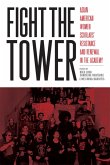Across North America a growing body of "chilly climate" research documents the role played by environmental factors in reproducing gender inequality: practices that stereotype, exclude and devalue women are persistently powerful forces in creating "glass ceilings" and maintaining "pink ghettos." Women academics in North American universities and colleges offer an especially striking case for such research. Precisely because of their elite status, the accounts now emerging of the "chilly climate" faced by academic women throw into sharp relief the mechanisms that foster gender inequity throughout North American society. Collected in this volume are a number of reports and commentaries on "climate issues" as they affect women faculty in Canadian universities. They include Sheila McIntyre's Memo, an account of gender harassment in the context of a law school that was first circulated in 1986; two reports by and about women faculty at the University of Western Ontario that were inspired by McIntyre's Memo; accounts of the reactions of male colleagues, the administration and the media to "climate" studies; and several chapters that critically reframe the discussion of chilly climate practices in terms of questions of race and sexual identity. Taken together, these reports and discussions demonstrate the importance of addressing the environmental roots of women's continuing inequity both within and outside contemporary academia. They communicate specific experiences which testify to the existence of a chilly climate in our universities, and call into question any supposition that women and men have achieved equity to the degree that they could be said to work in "the same" environment in these institutions.
Hinweis: Dieser Artikel kann nur an eine deutsche Lieferadresse ausgeliefert werden.
Hinweis: Dieser Artikel kann nur an eine deutsche Lieferadresse ausgeliefert werden.








